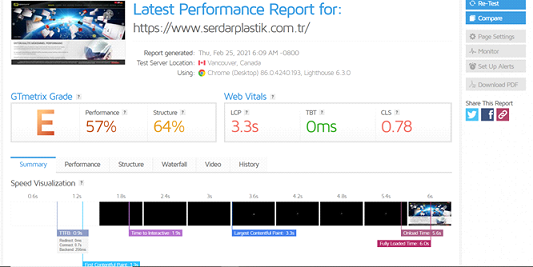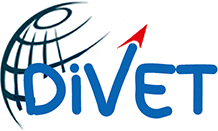Fatima (32 years, Turkey)
Fatima (32years) was working for the ministry of commerce, delivering training in women’s co-operatives and small-scale entrepreneurs. Her reasons for participating in the DiVET programme were to learn more about e-commerce, social media and marketing for the benefit of her trainees. While on the programme, Fatima carried out her work-based learning for a plastics manufacturer, which was supervised by the general manager.
Fatima’s learning activities in the company included using GT Matrix to compare the company’s web-page ranking:

Other work included analyses of and recommendations for the company’s presence on Youtube and Facebook.
Fatima believed she had gained very useful and valuable information ‘that I can use in business and social life’. When giving her ratings for DiVET in the post-survey, she scored outcomes for marketing, ability to work with others, and problem-solving as 5/5, and for exports as 4/5. Her only regret for the programme was the fact that trainers and students had not had a chance to come together because of the pandemic.
Orhan (40 years, Turkey)
Orhan was unemployed at the time of registering for DiVET, and in his early 40s. While he had a master’s degree, he had no previous experience or knowledge of export or marketing.
Orhan’s motivation for participating in the programme was to learn how to use social media which is an integral part of our lives, the ability to advertise through social media and export transactions.
During his work placement, Orhan worked with a building materials supplier, and reports learning the ways in which social media can positively affect sales, and how to apply social media processes for advertising and marketing.
He believed participating in DiVET had increased his chances of getting a job, but that this was currently on hold during the uncertainty of the pandemic.
Emil (36 years, Bulgaria)
Emil was 36 at the time of undertaking the DiVET programme. He was employed, providing technical support in a sales department. During the work-based learning component of DiVET, Emil spent time helping the firm develop its website, search engine optimization and social media presence. Below is the evidence Rusin reports in his log for achieving learning outcome 10: Manage the corporate website in order to facilitate the exporting process:
Second meeting with supervisor – discussed and outlined the following practical steps, which should be taken in relation with the development of a new website:
– Choosing new vision/appearance (web template) of the website with user friendly and simple design and easily accessible menus;
– New website content which should include the following main points – history of the company’s establishment and development; company portfolio; information about current business partners who have provided good reviews on their working relations and experience with the firm; catalogue of most successful and established company products; gallery with photos and videos from significant past events for the firm – international exhibitions, business forums, etc.
– Choosing easy to administer system when it is necessary to change existing or add new content, photos, etc.
– Menu with information about contact details and location of the firm;
– Adding module for tracking and analysis of the behaviour of the website users – which content is accessed by them in the first place; which content they spent most of their time on; tracking in what way they access the website (whether it is through Google search, directly typing the web address or through a link in social media); tracking user’s IP for analysis of number of unique visits to the website, respectively local or international users.
